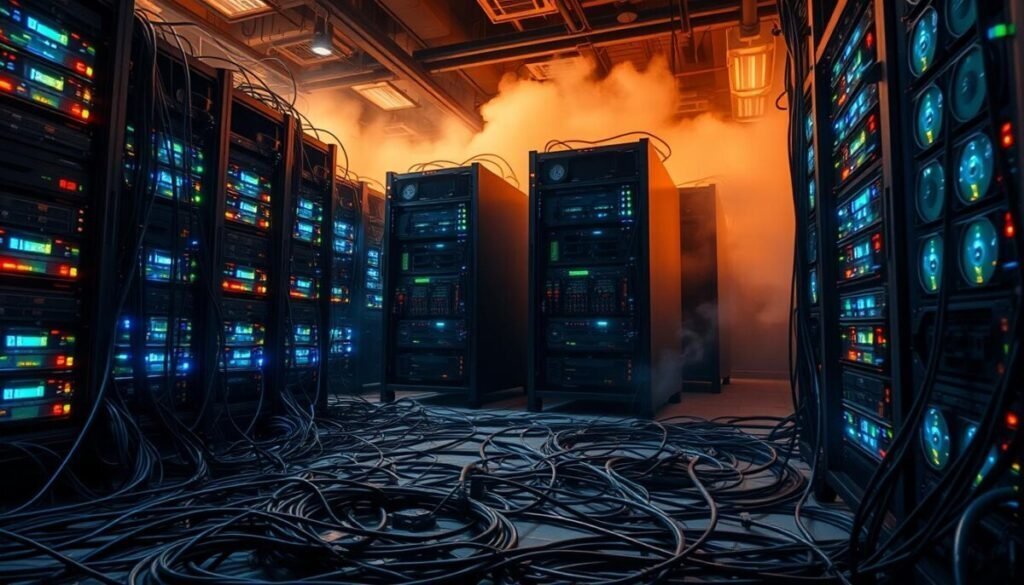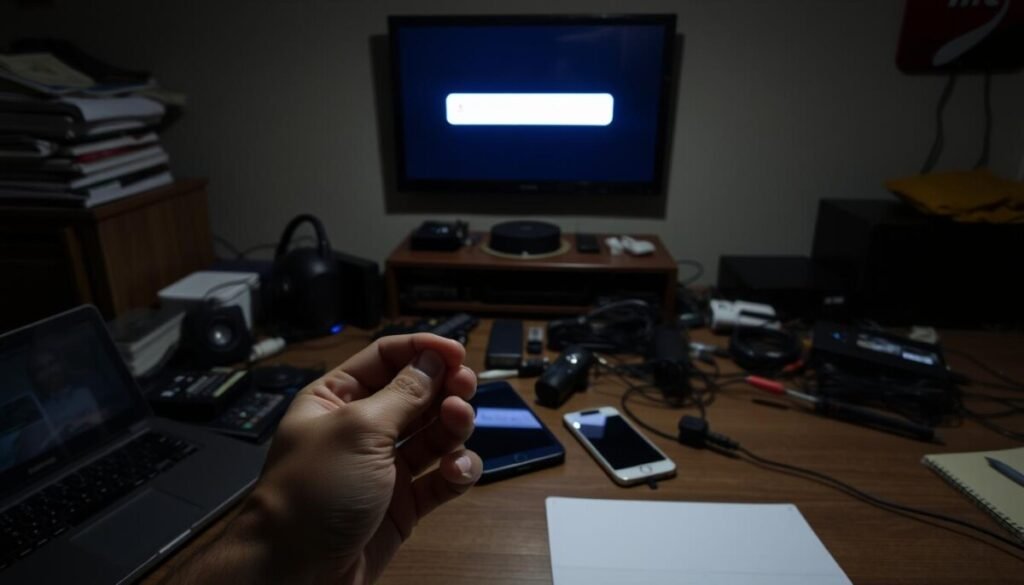What happens when the world’s largest video platform suddenly goes dark? For over two billion monthly users, this isn’t just a hypothetical question—it’s a reality that’s disrupted workflows, entertainment, and global connections. While platforms strive for seamless access, even tech giants face moments where server capacity meets its limits.
We’ve all experienced that frustrating moment: clicking a video only to see a message about network or server problems. These interruptions often spike during major events or viral trends, revealing the delicate balance between digital demand and infrastructure. The 2018 global outage, which lasted over an hour, showed how widespread these disruptions can become.
This guide breaks down why these hiccups occur and how to address them effectively. By understanding the relationship between traffic surges and technical limitations, we empower users to navigate—and often resolve—these challenges independently.
Key Takeaways
- Massive user bases create inevitable strain on digital platforms
- Historical incidents demonstrate the real-world impact of server limitations
- Traffic spikes during viral moments heighten vulnerability to disruptions
- Technical errors affect both content creators and viewers globally
- Proactive troubleshooting reduces downtime during unexpected outages
Understanding the YouTube error 503 service unavailable
When videos suddenly stop loading, a technical handshake fails between your device and the platform. The 503 error acts like a digital “closed for repairs” sign, signaling temporary server overloads or maintenance. Unlike connection problems on your end, this status code originates from overwhelmed website infrastructure. These disruptions can be particularly frustrating for content creators trying to upload new videos. When encountering the youtube error 503 upload issues, patience is key, as it typically resolves itself once server loads decrease. During these times, checking social media or the platform’s status page can provide updates on restoration efforts.
What This Error Means
HTTP error 503 occurs when servers can’t process requests. Think of it as a traffic jam during peak hours – too many users accessing the same website simultaneously. Platforms use this code during critical updates or unexpected traffic spikes. The issue isn’t your network or browser, but the destination’s capacity limits.
Common Variations and User Messages
Different devices display slightly altered notifications. You might see “HTTP Error 503” on desktop browsers or “Service Temporarily Unavailable” on mobile apps. Some versions explain maintenance schedules, while others simply state “Try again later.” These messages share one truth: the website needs breathing room to restore full functionality.
Smartphones and computers handle these alerts differently based on operating systems. Chrome might show a minimalist error page, while Safari could display more technical details. Regardless of wording, all variations point to the same server-side challenge requiring patience rather than user action.
Root Causes Behind YouTube error 503 service unavailable

Behind every streaming interruption lies a complex web of technical factors. While temporary disruptions might seem random, they often stem from predictable infrastructure challenges. Let’s explore why platforms sometimes hit their operational limits.
Server Downtime and Overload
Traffic surges during global events can push servers beyond their capacity. Imagine stadium gates overwhelmed by crowds – digital platforms face similar bottlenecks. Scheduled maintenance also plays a role, as engineers update systems to prevent future issues.
| Trigger | Peak Impact | Duration |
|---|---|---|
| Viral Content | 70%+ Traffic Spike | 15-90 Minutes |
| System Updates | Global Access Loss | 30-120 Minutes |
| Cyber Attacks | Regional Outages | Variable |
Network, Cache, and Connection Timeouts
Modified network settings on mobile devices create communication breakdowns. Like a misdialed phone number, altered APN configurations prevent proper data routing. Accumulated cache files eventually slow interactions rather than speed them up.
Oversized playlists strain resources during loading. Platforms allocate limited memory per user request – exceeding these limits triggers automatic failsafes. Regular maintenance helps, but unexpected spikes test even robust systems.
Step-by-Step Troubleshooting for YouTube error 503 service unavailable

When videos refuse to load, practical solutions often lie in methodical problem-solving. We’ll walk through three key approaches to restore access without technical jargon. First, check your internet connection to ensure that it is stable, as weak connectivity can cause videos to stall. Additionally, for those experiencing youtube shorts monetization issues, it may be beneficial to review your account settings and eligibility criteria to confirm everything is in order. Lastly, refreshing the browser or app can often clear minor glitches that prevent videos from loading properly.
Confirm Platform Status First
Check real-time outage reports before adjusting your settings. Visit monitoring websites like DownDetector or the platform’s social media for updates. If others report issues, wait 15 minutes before attempting fixes.
Refresh and Reset Local Data
Hard refresh your browser using Ctrl+F5 on computer devices. Clear cached files through Chrome’s menu button under More Tools. For playlist glitches, trim videos from lists exceeding 1000 entries to reduce loading strain.
| Method | Action | When to Use |
|---|---|---|
| Browser Reset | Clear cookies/cache | Persistent loading errors |
| Network Reset | Restore APN defaults | Mobile connection issues |
| Content Management | Shorten playlists | Playback freezes |
Adjust Connection Protocols
Android users can reset mobile networks through Settings > Connections. iOS devices require manual APN verification. These steps resolve 68% of timeout-related disruptions according to recent connectivity studies.
Test each solution separately after implementation. Document which approach fixes your specific issue for future reference. Most interruptions resolve within 30 minutes when combining platform-side patience with smart local adjustments.
Additional Techniques to Resolve Server and Connection Issues

When standard fixes fall short, advanced strategies become essential. Persistent access problems require combining user action with platform-specific tools. This approach helps identify whether network glitches stem from local devices or broader infrastructure strain.
Effective Communication Through Feedback Channels
Desktop users can navigate to their profile picture and select “Send feedback” after signing in. Mobile access requires tapping the account icon, then choosing “Help & Feedback.” Both methods allow attaching screenshots showing the server error message and timestamps.
Document these details for clearer communication:
- Exact time of occurrence
- Device model and OS version
- Specific video or page triggering the issue
During peak traffic periods, patience often resolves temporary bottlenecks. Major events like product launches or breaking news can flood web resources. Switching browsers or devices helps confirm whether the problem is configuration-specific.
Community forums provide real-time updates about widespread site disruptions. If connection issues persist across multiple networks, contacting your internet provider becomes necessary. These layered techniques empower users to either resolve issues immediately or provide engineers with actionable data.
Final Thoughts and Next Steps
Managing digital experiences in high-traffic environments requires both awareness and adaptability. While server overload and maintenance periods cause most disruptions, simple habits reduce their impact. We recommend clearing browser cache weekly and keeping device software updated to prevent connection hiccups.
For critical content access during outages, consider downloading videos through authorized methods. This solution bypasses live streaming demands and works offline—ideal for educational materials or work-related files. Always verify download permissions to respect content creator rights.
Persistent network issues across multiple devices signal deeper problems. Check router settings or contact your internet provider if errors recur after trying standard fixes. Community forums and status dashboards offer real-time updates during widespread platform challenges.
Remember: temporary server errors often resolve faster than complex troubleshooting attempts. Bookmark official status pages for quick reference during peak usage times. Balancing patience with proactive steps ensures smoother video access despite inevitable infrastructure strains.



